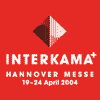|
By : Jim Pinto, Attendance is declining steadily at the large, central automation exhibitions. From the exhibitors' standpoint, it's more effective to invite key customers to attend focused presentations and private showings of all the latest products. Organized personal-networking conferences are also becoming successful.
Automation World, May 2005
|
 My own first introduction to the automation industry was through the big automation exhibitions. I remember vividly my first ISA shows. Everyone who was anyone was there, and the show attracted about 80-90,000 attendees for the week. Those were the glory days of the mid-'70s.
My own first introduction to the automation industry was through the big automation exhibitions. I remember vividly my first ISA shows. Everyone who was anyone was there, and the show attracted about 80-90,000 attendees for the week. Those were the glory days of the mid-'70s.
Others tried to replicate the ISA show's success in the US. To complement ISA's fall schedule, the Control Expo was held in the spring in Chicago. When it didn’t really do too well, it was consolidated as Manufacturing Week with several allied interests beyond just automation. The European shows were bigger. The annual Hannover Fair in Germany was easily the largest of all industrial exhibitions, including all types of industrial equipment, with automation exhibited primarily in three large buildings. At its peak, the event attracted some 100,000 visitors per day. Interkama, in Dusseldorf was the world's biggest automation fair, attracting literally hundreds of thousands every 3 years. And there were other big European exhibitions – Mesucora in Paris, the HET exhibition in Holland, BIAS in Italy and more. The great strength of the European fairs was that they seemed to attract people from all around the world. Steady decline Clearly those were the halcyon days for automation. But alas, those days have gone. Attendance at annual ISA shows has declined to a mere fraction of former times. The supplier to customer ratio which used to be as much as 10:1 is more like 1:1 today and sometimes less (my estimates). Traffic is sparse, with forlorn exhibitors spending their time reviewing each others products and bemoaning hard times.The European exhibitions are also fading away, with organizers scrambling to consolidate. Interkama has gradually declined from 15 to 9 halls, and then just 5. They played around with frequency and focus, but failed to stem the decline. Two years ago, they gave up and became a sub-section of the Hanover Fair; in 2004 attendance was reported to be down to 60,000. In the UK there is no longer a major automation exhibition. Their major event, the Control & Instrumentation (C&I) show had a peak attendance of about 12,000. But, it failed to attract any international involvement and folded about 5 years ago. The decline in all the major automation exhibitions cannot be seen as a criticism of any specific organization. Rather, it is a strategic shift, a recognition that the days of large, central exhibitions are over. Many explanations have been given for the decline: cost of participation, constrained marketing and development expenditures caused by business decline, very little new to see. Focused AlternativesToday, the typical customer can review a significant amount of information via the Internet, and it is usually more up to date than any printed catalogs or literature. The cost of sending an employee to a central exhibition includes travel, local transportation, meals and hotel accommodations, plus lost time from regular activities. This inhibits most companies from sending employees to attend large, central exhibitions. A day's visit to a local show is usually the most that is acceptable.From the exhibitors' standpoint, it's more effective to invite key customers to attend a private showing of all the latest products, with focused presentations by key personnel. More and more automation suppliers are taking this route – not attending the major exhibitions, but instead having their own shows. This tactic is now being used very effectively by most of the automation majors – Honeywell, Rockwell, Emerson, ABB and others. Hence their non-attendance at the major exhibitions. Seeing the future?In recent times, third-party organized personal-networking conferences are becoming successful. Automation Research, for example, hosts conferences where senior people, typically Presidents and CEOs from both customer and supplier organizations, address the gathering. The cost is higher than the usual exhibition/conference, but attendance is targeted at the select few who find it worthwhile. Apparently the higher ticket is more than justified by the focused program, valuable content and opportunities for personal networking with senior executives. Perhaps this points the way to the future.
|
Return to Index of all JimPinto Writings

 Return to JimPinto.com HomePage
Return to JimPinto.com HomePage
If you have ideas or suggestions to improve this site, contact: webmaster@jimpinto.com
Copyright 2003 : Jim Pinto, San Diego, CA, USA
